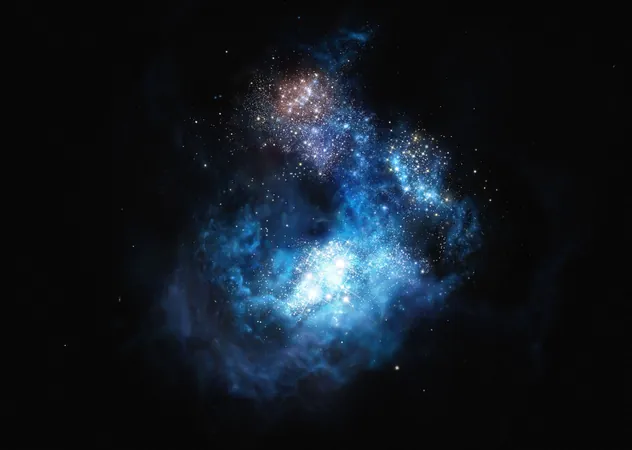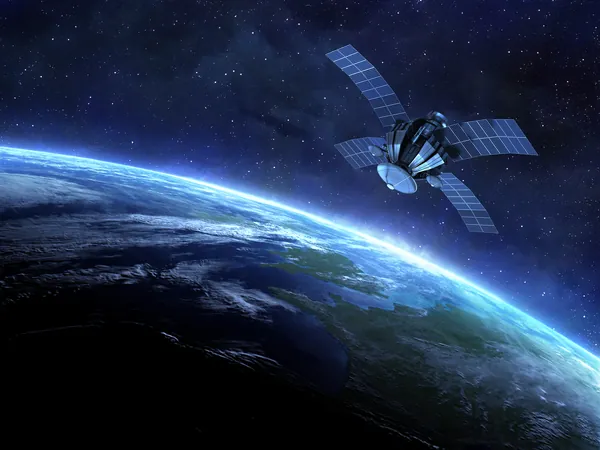
Did Supernovae Pave the Way for Water in the Early Universe? Here’s What Scientists Just Discovered!
2025-01-15
Author: Wei Ling
Introduction
Water has long been hailed as the essence of life, a vital component for all living organisms on Earth. With its unparalleled ability to support life, it’s no wonder our planet teems with it. But have you ever wondered about the origins of water in the universe? New research suggests that the earliest supernovae, massive star explosions, played a crucial role in flooding the cosmos with this life-sustaining molecule.
Historical Background
Historically, we have believed that oxygen—a key ingredient in water—was produced over time as stars exploded and returned elements to the universe. Oxygen forms in the cores of massive stars during the nuclear fusion process. As these stars live and die, they eject their contents into space, enriching the interstellar medium. Initially, it was assumed that water was scarce in the early universe, only to become common as generations of stars formed and died. However, a groundbreaking study challenges this long-held notion.
Populations of Stars
In the astronomical community, stars are divided into three populations based on their age and metallicity (elements heavier than hydrogen and helium). Population I stars, like our Sun, are young and rich in metals. Population II stars are older with less metallic content. The oldest, known as Population III stars, were the first to exist, comprised solely of hydrogen and helium. Although we have yet to observe these ancient stars directly, they are believed to have played an instrumental role in the evolution of the universe and the formation of molecules.
New Discoveries about Water Production
This latest research draws attention to how Population III stars contributed more than just heavier elements—they likely also contributed substantial amounts of water. The research team’s simulations focused on supernovae resulting from both smaller stars (about 13 times the mass of our Sun) and massive ones (around 200 solar masses). The findings indicate that these early explosions enriched the surrounding molecular clouds with water, creating environments teeming with the life-essential compound.
Implications for Cosmic History
What’s astonishing is that the water fraction within these clouds could have been 10 to 30 times higher than the diffuse molecular clouds we see in our Milky Way galaxy today. By projecting forward in time to roughly 100 to 200 million years after the Big Bang, the researchers argue that the cosmos was already brimming with the potential for life, bolstered by the presence of water and other essential elements.
The Question of Early Life
Yet, the question remains: did life actually emerge in the universe so soon? While water appears to have been present early on, astrophysical processes, including ionization, may have disrupted many existing water molecules, leading to a dry epoch before the waters we know today were established by later generations of stars.
Conclusion
Could it be that the water we rely on today has its cosmic origins in the very first stars that ever existed? The implications of this research not only reshape our understanding of cosmic history but also ignite curiosity about the possibility of life beyond Earth. As scientists continue to unravel these cosmic mysteries, one thing is clear: the universe has more secrets to share, and we’re just beginning to understand our celestial heritage!


 Brasil (PT)
Brasil (PT)
 Canada (EN)
Canada (EN)
 Chile (ES)
Chile (ES)
 Česko (CS)
Česko (CS)
 대한민국 (KO)
대한민국 (KO)
 España (ES)
España (ES)
 France (FR)
France (FR)
 Hong Kong (EN)
Hong Kong (EN)
 Italia (IT)
Italia (IT)
 日本 (JA)
日本 (JA)
 Magyarország (HU)
Magyarország (HU)
 Norge (NO)
Norge (NO)
 Polska (PL)
Polska (PL)
 Schweiz (DE)
Schweiz (DE)
 Singapore (EN)
Singapore (EN)
 Sverige (SV)
Sverige (SV)
 Suomi (FI)
Suomi (FI)
 Türkiye (TR)
Türkiye (TR)
 الإمارات العربية المتحدة (AR)
الإمارات العربية المتحدة (AR)